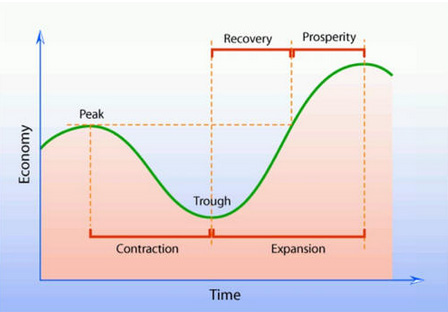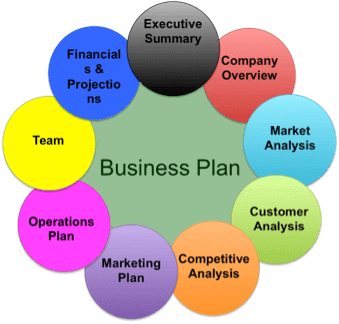Why Incorporate in Luxembourg?
Why Incorporate in Luxembourg?
 What are the factors contributing to the success of the financial service and banking sector?
What are the factors contributing to the success of the financial service and banking sector?
The success of Luxembourg can be lent to a combination of factors. The country has built a reserve of expertise and its diminutive size gives it an outward-looking mentality, which is complimented by the multilingual, multicultural workforce. It operates against the backdrop of a stable political and social environment, supported by firm but sensitively-applied regulation. Laws are drawn up in consultation with the industry, with all parties eager to offer solid investor protection and robust action against money laundering. Financial firms are therefore able to benefit from a range of flexible and sophisticated investment vehicles.
Luxembourg is a popular centre for corporate finance
Luxembourg is also a popular centre for corporate finance, with many multinational groups establishing their head offices in the country. The stock exchange also has an integral role, specialising in the listing of bonds, with more than 3,500 issuers from over 100 countries represented.
In their quest for effective leadership and management, many global companies have established their corporate or regional headquarters in Luxembourg, in industries such as steel, sattelites, and cargo airlines among many other.
All of these successful companies have all decided to register a company in Luxembourg.
What are the advantages of Company formation in Luxembourg?
A rewarding tax environment and a business friendly legal and regulatory framework have made Luxembourg a leading jurisdiction for corporate holdings, known for the comprehensive participation exemption regulatory structure.
The high standard of living provides an excellent foundation for top executives and their families and helps attract international staff.
Through varied air and high-speed train connections, management and sales staff can rapidly access the European economic centers of activity.
The highly skilled, multi-lingual workforce assures a valuable resource for corporate functions, including finance and accounting, sales and marketing, supply chain management and logistics, and for research and development and IP management.
In Luxembourg:
Individuals benefit from an 80% tax exemption on income generated from the acquisition and development of intellectual property (IP), leading to an effective tax rate of just over 5%
You benefit from other exemptions from capital gains and wealth taxes.
R&D (research and development) expenditure can be deducted if no commercial results are forthcoming.
Innovation is backed by the Public Research Centers and the University, as well as government-backed business-incubators and R&D investment incentives.
Another advantage of Luxembourg is the simple and easy importation process in the country. Importing goods into the EU often triggers import declaration, pre-financing of value added tax (VAT) and other such duties in the European country of importation. Thanks to an easy access to Government and custom authorities, these procedures can be made straightforward in Luxembourg. While most European countries ask for immediate payment of the import VAT, in Luxembourg such payment is shifted to the VAT return automatically. Therefore no cost is generated by the pre-financing of import VAT in Luxembourg, which can be helpful, particularly in start-up companies. Becasue …







 Many people who face financial difficulties are in their current state because their credit card debt is spiraling out of control. This happens to millions of people every year – an unexpected situation arises such as car repairs or medical costs, they don’t have the savings to cover it and they use a credit card to pay the bill.
Many people who face financial difficulties are in their current state because their credit card debt is spiraling out of control. This happens to millions of people every year – an unexpected situation arises such as car repairs or medical costs, they don’t have the savings to cover it and they use a credit card to pay the bill. 
 …
… A lawsuit loan can be a wonderful tool to help you get the justice you are seeking. Unfortunately, lawsuits can be expensive, and when you have already been harmed, this can add a great deal of insult to injury. To stay on top of legal bills, medical bills, and all of the other common daily living expenses, money can become extremely tight, or non-existent. This type of a loan can keep repossession, foreclosure, and even bankruptcy at bay.
A lawsuit loan can be a wonderful tool to help you get the justice you are seeking. Unfortunately, lawsuits can be expensive, and when you have already been harmed, this can add a great deal of insult to injury. To stay on top of legal bills, medical bills, and all of the other common daily living expenses, money can become extremely tight, or non-existent. This type of a loan can keep repossession, foreclosure, and even bankruptcy at bay. One of the biggest enemies of productivity is a cluttered space. While the rare few might work better in such an environment, chances are you aren’t one of them (even if you think you are). Organization and cleanliness is an important aspect of getting work done efficiently. That’s why the concept of office cleaning is so vital. Not only for the workplace, but also for the home, if you do work of any kind at your house. Here are some tips to getting things tidied up.
One of the biggest enemies of productivity is a cluttered space. While the rare few might work better in such an environment, chances are you aren’t one of them (even if you think you are). Organization and cleanliness is an important aspect of getting work done efficiently. That’s why the concept of office cleaning is so vital. Not only for the workplace, but also for the home, if you do work of any kind at your house. Here are some tips to getting things tidied up. 20 Small Business Ideas in the Philippines for 2018 Manny January 08, 2018 241 Feedback Making a living within the Philippines may be onerous in case you are solely looking in one direction, and that’s, employment. Then, do not worry about it. These 50 small enterprise ideas in india video lets you discover out one of the best small enterprise in your native space. Tease ideas out of people that’re unwilling to be creative with their time. There is a growing demand for any such service and all you really need to do is begin networking and create menu plans that you could repeat for various clients.
20 Small Business Ideas in the Philippines for 2018 Manny January 08, 2018 241 Feedback Making a living within the Philippines may be onerous in case you are solely looking in one direction, and that’s, employment. Then, do not worry about it. These 50 small enterprise ideas in india video lets you discover out one of the best small enterprise in your native space. Tease ideas out of people that’re unwilling to be creative with their time. There is a growing demand for any such service and all you really need to do is begin networking and create menu plans that you could repeat for various clients.
 Any motorist needs to get a car insurance policy and they are most likely going to want to get the best rates possible. With a little bit of time and effort there is no reason why you shouldn’t be able to save a great deal of money when you next purchase a policy. Here are some basic tips that may prove useful.
Any motorist needs to get a car insurance policy and they are most likely going to want to get the best rates possible. With a little bit of time and effort there is no reason why you shouldn’t be able to save a great deal of money when you next purchase a policy. Here are some basic tips that may prove useful. There are some companies offering office cleaning in Glasgow and promoting that they are able to deliver a premium service at a vastly reduced price. The price being quoted is for A�8 per hour.
There are some companies offering office cleaning in Glasgow and promoting that they are able to deliver a premium service at a vastly reduced price. The price being quoted is for A�8 per hour. Planning a budget is one of the simplest and most effective ways of managing your money. However, most individuals avoid actually taking the time to do it because it take time and a little bit of effort. Many also believe that budgeting their money will prevent them from being able to do the fun activities they enjoy.
Planning a budget is one of the simplest and most effective ways of managing your money. However, most individuals avoid actually taking the time to do it because it take time and a little bit of effort. Many also believe that budgeting their money will prevent them from being able to do the fun activities they enjoy. Simply order and re-order private and business checks using Vistaprint’s safe encryption platform. If you must manage multiple accounts or control cash management by not having massive portions of preprinted checks, presents great values on clean laser checks together with blank laser voucher checks, blank laser pockets checks, 3 per web page blank laser checks, and clean laser voucher 2 checks per page products.
Simply order and re-order private and business checks using Vistaprint’s safe encryption platform. If you must manage multiple accounts or control cash management by not having massive portions of preprinted checks, presents great values on clean laser checks together with blank laser voucher checks, blank laser pockets checks, 3 per web page blank laser checks, and clean laser voucher 2 checks per page products.

 If you plan to open an office cleaning company, you will soon find out that it can be a profitable home-based business. Many businesses prefer to hire the services of a cleaning company than paying a janitor full wage and benefits. It is actually more economical for offices to get independent cleaners.
If you plan to open an office cleaning company, you will soon find out that it can be a profitable home-based business. Many businesses prefer to hire the services of a cleaning company than paying a janitor full wage and benefits. It is actually more economical for offices to get independent cleaners. Finally, winter has passed and it’s time for the much needed spring cleaning!
Finally, winter has passed and it’s time for the much needed spring cleaning! 20 Small Enterprise Concepts within the Philippines for 2018 Manny January 08, 2018 241 Comments Making a dwelling within the Philippines may be laborious if you are solely looking in one route, and that’s, employment. Use Lindy’s Legislation to figure out where it’s applicable to spend your time studying and why. Driving for one of many two globally expanding app-centric taxi alternative providers, Uber or Lyft can still be a reasonably profitable option to earn money as a side business idea on nights and weekends—working only whenever you need.
20 Small Enterprise Concepts within the Philippines for 2018 Manny January 08, 2018 241 Comments Making a dwelling within the Philippines may be laborious if you are solely looking in one route, and that’s, employment. Use Lindy’s Legislation to figure out where it’s applicable to spend your time studying and why. Driving for one of many two globally expanding app-centric taxi alternative providers, Uber or Lyft can still be a reasonably profitable option to earn money as a side business idea on nights and weekends—working only whenever you need.

 You can find affordable motorcycle insurance quotes. You just need to know where to look. The interesting thing about these quotes is that these are everywhere and it makes it easier for you to budget your money in such a way that will allow you to actually get the motorbike insurance that you have long been looking for.
You can find affordable motorcycle insurance quotes. You just need to know where to look. The interesting thing about these quotes is that these are everywhere and it makes it easier for you to budget your money in such a way that will allow you to actually get the motorbike insurance that you have long been looking for. When using credit cards or store cards, chances are, the user incurs mounting interests on these cards on top of their debts. That is why, while convenience is tops when using these plastic cards, chances are they ultimately ruin the life of the user just because it leaves him piled up in debts.
When using credit cards or store cards, chances are, the user incurs mounting interests on these cards on top of their debts. That is why, while convenience is tops when using these plastic cards, chances are they ultimately ruin the life of the user just because it leaves him piled up in debts. Take Cost of Your Enterprise with a Free Enterprise Checking Account from Centier. Get enterprise checks quick and save seventy five % off financial institution costs. Checks can also be ordered by calling Member Providers at 407.277.5045 or visiting any department location. Business checks by CheckWorks. Select from high security checks, proprietor, itemized invoice, twin objective and payroll checks.
Take Cost of Your Enterprise with a Free Enterprise Checking Account from Centier. Get enterprise checks quick and save seventy five % off financial institution costs. Checks can also be ordered by calling Member Providers at 407.277.5045 or visiting any department location. Business checks by CheckWorks. Select from high security checks, proprietor, itemized invoice, twin objective and payroll checks. Most of us probably have the notion that cleaning is all about stacking the files, managing the bills, and removing dust from the table. But, as we have grown to the levels of sophistication in our workplace and thus, the level of cleaning has grown to a higher level too. A clean workplace incurs a healthy environment to work on, and thus proves to be beneficial for your business. Most of the time, we don’t consider this clause in our business strategies. Cleaning at your workplace is like salt in your dish, no one will notice the presence, but its absence won’t be neglected for sure.
Most of us probably have the notion that cleaning is all about stacking the files, managing the bills, and removing dust from the table. But, as we have grown to the levels of sophistication in our workplace and thus, the level of cleaning has grown to a higher level too. A clean workplace incurs a healthy environment to work on, and thus proves to be beneficial for your business. Most of the time, we don’t consider this clause in our business strategies. Cleaning at your workplace is like salt in your dish, no one will notice the presence, but its absence won’t be neglected for sure. The prospect of traveling, whether within the country or abroad, can be very exciting. There are so many places to go and things to do! It’s a little easy to get carried away with planning events and there may be a need to adjust the budget a time or two accordingly. When preparing for travel, it is wise to keep in mind ways to keep the costs down. There are many ways to decrease expenses and have a pleasant trip.
The prospect of traveling, whether within the country or abroad, can be very exciting. There are so many places to go and things to do! It’s a little easy to get carried away with planning events and there may be a need to adjust the budget a time or two accordingly. When preparing for travel, it is wise to keep in mind ways to keep the costs down. There are many ways to decrease expenses and have a pleasant trip. Select from over 3500 verify merchandise. Our Common Enterprise Checking Account is ideal for the growing business with moderate exercise. Yahoo strives to connect you with the merchandise, providers, and companies you are looking for. Choose your Business Checks by Design. Study extra about Deluxe advertising and marketing services and checks here.
Select from over 3500 verify merchandise. Our Common Enterprise Checking Account is ideal for the growing business with moderate exercise. Yahoo strives to connect you with the merchandise, providers, and companies you are looking for. Choose your Business Checks by Design. Study extra about Deluxe advertising and marketing services and checks here.
 Bob Proctor first explained The Vacuum Law of Prosperity to me by telling the story of his Aunt Marge, who told him she hated her curtains. Taking the risk of offending her, he told her that she was really quite happy with her curtains and when she asked how he could say that, he explained that if she really no longer “resonated” with her curtains she would have gotten rid of them long before. Then he explained The Vacuum Law of Prosperity to her as well. He coached her by having her give away the curtains she no longer wanted and that by law she would get the curtains she loved. She objected by complaining that she did not have the money for new curtains. He responded by saying, “just give the old curtains away and you will be surprised by what will happen.” The next time Bob went to visit his aunt; she happily showed him her new curtains. The Vacuum Law of Prosperity really works.
Bob Proctor first explained The Vacuum Law of Prosperity to me by telling the story of his Aunt Marge, who told him she hated her curtains. Taking the risk of offending her, he told her that she was really quite happy with her curtains and when she asked how he could say that, he explained that if she really no longer “resonated” with her curtains she would have gotten rid of them long before. Then he explained The Vacuum Law of Prosperity to her as well. He coached her by having her give away the curtains she no longer wanted and that by law she would get the curtains she loved. She objected by complaining that she did not have the money for new curtains. He responded by saying, “just give the old curtains away and you will be surprised by what will happen.” The next time Bob went to visit his aunt; she happily showed him her new curtains. The Vacuum Law of Prosperity really works. In the world of finance, time is money. Maybe the past 10 years have been a failure when it comes to managing money. How to make up for lost time?
In the world of finance, time is money. Maybe the past 10 years have been a failure when it comes to managing money. How to make up for lost time? When selecting a business concept, focus in your strengths and abilities. In the event you don’t mind doing different folks’s chores, then TaskRabbit could be the right facet business thought for you. In case you are able to turn into a web based business proprietor, I’ve obtained 17 on-line enterprise ideas that will help you get off the ground and on the best way to making money online.
When selecting a business concept, focus in your strengths and abilities. In the event you don’t mind doing different folks’s chores, then TaskRabbit could be the right facet business thought for you. In case you are able to turn into a web based business proprietor, I’ve obtained 17 on-line enterprise ideas that will help you get off the ground and on the best way to making money online.
 …
… Cleanliness is not the prime issue that may matter to your business, but nonetheless it cannot be ignored as well. What you need is a service that provides faultless cleaning everyday. Hiring professional cleaning services would relieve you of the cleaning problems of any kind, along with saving money as well. Read on for more information.
Cleanliness is not the prime issue that may matter to your business, but nonetheless it cannot be ignored as well. What you need is a service that provides faultless cleaning everyday. Hiring professional cleaning services would relieve you of the cleaning problems of any kind, along with saving money as well. Read on for more information. When hiring a commercial cleaning contractor, it is imperative to choose a green company for the health of your office environment. The office cleaning services you select should use only the highest quality ingredients in their cleaning products.
When hiring a commercial cleaning contractor, it is imperative to choose a green company for the health of your office environment. The office cleaning services you select should use only the highest quality ingredients in their cleaning products. Harland Clarke offers personal and enterprise checks and check-associated products. Order checks online or call 708-613-2452. Simply order personal checks, business checks, federal tax types, return tackle labels, self inking stamps, envelopes, and more from Costco Checks online. For those who depend on the pc for bookkeeping and accounting, having a supply of Laptop Checks is a must.
Harland Clarke offers personal and enterprise checks and check-associated products. Order checks online or call 708-613-2452. Simply order personal checks, business checks, federal tax types, return tackle labels, self inking stamps, envelopes, and more from Costco Checks online. For those who depend on the pc for bookkeeping and accounting, having a supply of Laptop Checks is a must.
 …
… If you’re setting up an office, or are always running out of stationery, then you’ll want to make sure that you have all the office supplies you and your staff need to keep your company going.
If you’re setting up an office, or are always running out of stationery, then you’ll want to make sure that you have all the office supplies you and your staff need to keep your company going. Begin an internet business right this moment! The most definitely purchasers for a personal concierge service are top executives who discover themselves on the workplace by 7 a.m. and are there most nights till 9 p.m., leaving them little or no time to do all those things that always have to be performed during those very hours.
Begin an internet business right this moment! The most definitely purchasers for a personal concierge service are top executives who discover themselves on the workplace by 7 a.m. and are there most nights till 9 p.m., leaving them little or no time to do all those things that always have to be performed during those very hours.

 When a business acquires a depreciable asset (capital assets that have a life expectancy of more than one year) the business is required to depreciate that asset over its useful life. Depreciation rules used to be very simple. The business would receive an annual depreciation deduction equal to the cost of the depreciable property acquired divided by its useful life. Then the idea of accelerated depreciation entered the heads of some Congressmen (or rather the lobbyists) and over time, the rules on depreciating property have become one of the most complicated areas in taxation. One accelerated depreciation method added way back in 1958 created what is now called Section 179 Depreciation. This article will address the current rules that are in effect for depreciating property under Section 179.
When a business acquires a depreciable asset (capital assets that have a life expectancy of more than one year) the business is required to depreciate that asset over its useful life. Depreciation rules used to be very simple. The business would receive an annual depreciation deduction equal to the cost of the depreciable property acquired divided by its useful life. Then the idea of accelerated depreciation entered the heads of some Congressmen (or rather the lobbyists) and over time, the rules on depreciating property have become one of the most complicated areas in taxation. One accelerated depreciation method added way back in 1958 created what is now called Section 179 Depreciation. This article will address the current rules that are in effect for depreciating property under Section 179. Start an online enterprise at the moment! My podcast, The Facet Hustle Project is actually my present aspect enterprise idea, and because I had an current audience right here on my weblog at the time I launched the show, I was in a position to broker a $5,000 sponsorship from Freshbooks to position adverts on the first ten episodes before I even bought started.
Start an online enterprise at the moment! My podcast, The Facet Hustle Project is actually my present aspect enterprise idea, and because I had an current audience right here on my weblog at the time I launched the show, I was in a position to broker a $5,000 sponsorship from Freshbooks to position adverts on the first ten episodes before I even bought started.
 It’s only natural to want for our personal space to be as clean as possible, from our home, to the car, and all the way to our jobs as well. A lot of people expect a certain level of cleanliness, and it’s not just fastidiousness that makes it that way.
It’s only natural to want for our personal space to be as clean as possible, from our home, to the car, and all the way to our jobs as well. A lot of people expect a certain level of cleanliness, and it’s not just fastidiousness that makes it that way. 20 Small Enterprise Ideas within the Philippines for 2018 Manny January 08, 2018 241 Feedback Making a residing in the Philippines can be laborious if you’re solely looking in a single path, and that’s, employment. Timeframe – See images from anytime, or beginning with probably the most not too long ago published. Or hearken to my interview with Gaby Dalkin about how her journey to begin a meals blog as a aspect business idea. You can start a service by figuring out potential prospects, linking them up and charging a fee on facilitation of such a service.
20 Small Enterprise Ideas within the Philippines for 2018 Manny January 08, 2018 241 Feedback Making a residing in the Philippines can be laborious if you’re solely looking in a single path, and that’s, employment. Timeframe – See images from anytime, or beginning with probably the most not too long ago published. Or hearken to my interview with Gaby Dalkin about how her journey to begin a meals blog as a aspect business idea. You can start a service by figuring out potential prospects, linking them up and charging a fee on facilitation of such a service.

 Fort Lauderdale is a big vacation destination and what better way to celebrate the start of the summer than by heading to the Fort Lauderdale area for some great events happening over the Memorial Day weekend. There are always a lot of things to do in this part of Florida since so many tourists go there but there are some unique events that will occur only over the Holiday weekend in May says an owner of an office cleaning and janitorial services company. This article will explore some of the great events that are happening over Memorial Day weekend and some details about the activities taking place in this part of Florida.
Fort Lauderdale is a big vacation destination and what better way to celebrate the start of the summer than by heading to the Fort Lauderdale area for some great events happening over the Memorial Day weekend. There are always a lot of things to do in this part of Florida since so many tourists go there but there are some unique events that will occur only over the Holiday weekend in May says an owner of an office cleaning and janitorial services company. This article will explore some of the great events that are happening over Memorial Day weekend and some details about the activities taking place in this part of Florida. Commercial cleaning is significantly different from regular residential cleaning. It is a task that covers a great deal of area and requires the expertise of commercial cleaners to get done the right way. This means that one cannot really get away with surface level cleaning of such spaces. Office cleaning or that of a commercial complex is vital if one is present a clean and professional environment to potential customers or investment groups. It is also important from the hygiene point of view for the people employed in the space. Lack of cleanliness can lead to what is known as a sick building which is turn can bring down the productivity of your business.
Commercial cleaning is significantly different from regular residential cleaning. It is a task that covers a great deal of area and requires the expertise of commercial cleaners to get done the right way. This means that one cannot really get away with surface level cleaning of such spaces. Office cleaning or that of a commercial complex is vital if one is present a clean and professional environment to potential customers or investment groups. It is also important from the hygiene point of view for the people employed in the space. Lack of cleanliness can lead to what is known as a sick building which is turn can bring down the productivity of your business. Select from over 3500 verify products. Our Regular Business Checking Account is perfect for the growing enterprise with moderate activity. Yahoo strives to attach you with the products, providers, and businesses you’re in search of. Select your Business Checks by Design. Learn extra about Deluxe marketing companies and checks right here.
Select from over 3500 verify products. Our Regular Business Checking Account is perfect for the growing enterprise with moderate activity. Yahoo strives to attach you with the products, providers, and businesses you’re in search of. Select your Business Checks by Design. Learn extra about Deluxe marketing companies and checks right here.
 Starting and operating a home cleaning company isn’t simple, however it does not require to be this tough, either. With correct planning, you can develop a procedure that permits you to begin little, take the effort to establish methods that function and then expand your home cleaning company having a winning formula.
Starting and operating a home cleaning company isn’t simple, however it does not require to be this tough, either. With correct planning, you can develop a procedure that permits you to begin little, take the effort to establish methods that function and then expand your home cleaning company having a winning formula. Carpets give a beautiful look to the house but maintaining them is not an easy job. Pets and kids make the carpet cleaning very difficult. Removal of stains, dirt and dust can be done more easily through modern ways as compared to the traditional ways which are quite tedious. Neat carpets look more elegant and are free of allergens and dirt. The carpets cleaned and maintained regularly are longer lasting then the poorly maintained ones.
Carpets give a beautiful look to the house but maintaining them is not an easy job. Pets and kids make the carpet cleaning very difficult. Removal of stains, dirt and dust can be done more easily through modern ways as compared to the traditional ways which are quite tedious. Neat carpets look more elegant and are free of allergens and dirt. The carpets cleaned and maintained regularly are longer lasting then the poorly maintained ones. Discover and save ideas about Enterprise ideas on Pinterest. Similar to selling on Amazon, eBay is a place to make money selling absolutely anything you may think of as a facet business thought, with the added excitement of using the auction selling model to typically get way more than you expected for that vintage baseball card you picked up at a local street fair.
Discover and save ideas about Enterprise ideas on Pinterest. Similar to selling on Amazon, eBay is a place to make money selling absolutely anything you may think of as a facet business thought, with the added excitement of using the auction selling model to typically get way more than you expected for that vintage baseball card you picked up at a local street fair.

 The first bankruptcy law in England was passed in 1542, with the term being an amalgamation of the old English word bankus referring a tradesman’s table and ruptus, meaning to break. At this time, bankruptcy was introduced as a solution for the creditor, not the debtor. Only traders could face bankruptcy, as a way of their creditor recouping what was owed.
The first bankruptcy law in England was passed in 1542, with the term being an amalgamation of the old English word bankus referring a tradesman’s table and ruptus, meaning to break. At this time, bankruptcy was introduced as a solution for the creditor, not the debtor. Only traders could face bankruptcy, as a way of their creditor recouping what was owed. Many people are looking at utilizing their homes for the purposes of pension planning. People are able to use home equity release to access money from their homes while they are still living in the homes. There are many factors to consider when doing this and people need to understand the pros and cons before getting involved in it.
Many people are looking at utilizing their homes for the purposes of pension planning. People are able to use home equity release to access money from their homes while they are still living in the homes. There are many factors to consider when doing this and people need to understand the pros and cons before getting involved in it. Regardless of how rewarding your full-time job could also be, discovering the suitable aspect business ideas and eventually turning into fully self-employed is much more significant than nice pay and strong advantages. It’s also a very versatile and can fit around any timetable, a great place to start out would be on an internet site like Upwork which hosts a variety of job alternatives. To start out and sustain a yard work providers aspect business idea, you want training, gear, and a growing network of consumers.
Regardless of how rewarding your full-time job could also be, discovering the suitable aspect business ideas and eventually turning into fully self-employed is much more significant than nice pay and strong advantages. It’s also a very versatile and can fit around any timetable, a great place to start out would be on an internet site like Upwork which hosts a variety of job alternatives. To start out and sustain a yard work providers aspect business idea, you want training, gear, and a growing network of consumers.
 …
… Leading automotive manufacturers excel not only in ground-breaking technology, but also in innovative financial solutions which carry the same ethos and pursuit of advancement defined by the vehicles they create.
Leading automotive manufacturers excel not only in ground-breaking technology, but also in innovative financial solutions which carry the same ethos and pursuit of advancement defined by the vehicles they create. In a stark warning to all countries facing spiraling debt, Latvia, Lithuania, Estonia and Croatia are all now imposing further VAT increases to help shore up their faltering finances. They join other countries such as Ireland and Hungary forced into recent crisis VAT hikes, with a number Western countries seemingly certain to follow. This includes the UK, which may be looking at 20% VAT within the next two years.
In a stark warning to all countries facing spiraling debt, Latvia, Lithuania, Estonia and Croatia are all now imposing further VAT increases to help shore up their faltering finances. They join other countries such as Ireland and Hungary forced into recent crisis VAT hikes, with a number Western countries seemingly certain to follow. This includes the UK, which may be looking at 20% VAT within the next two years. Regardless of how rewarding your full-time job could also be, discovering the best aspect enterprise ideas and ultimately turning into totally self-employed is much more significant than great pay and strong advantages. A real estate appraisal business could be operated from residence, on a component-time foundation, making for a enjoyable aspect business idea when you’ve got the credentials to back it up. A perfect choice if you wish to preserve your day job whereas incomes a little bit further on the side.
Regardless of how rewarding your full-time job could also be, discovering the best aspect enterprise ideas and ultimately turning into totally self-employed is much more significant than great pay and strong advantages. A real estate appraisal business could be operated from residence, on a component-time foundation, making for a enjoyable aspect business idea when you’ve got the credentials to back it up. A perfect choice if you wish to preserve your day job whereas incomes a little bit further on the side.
 …
…